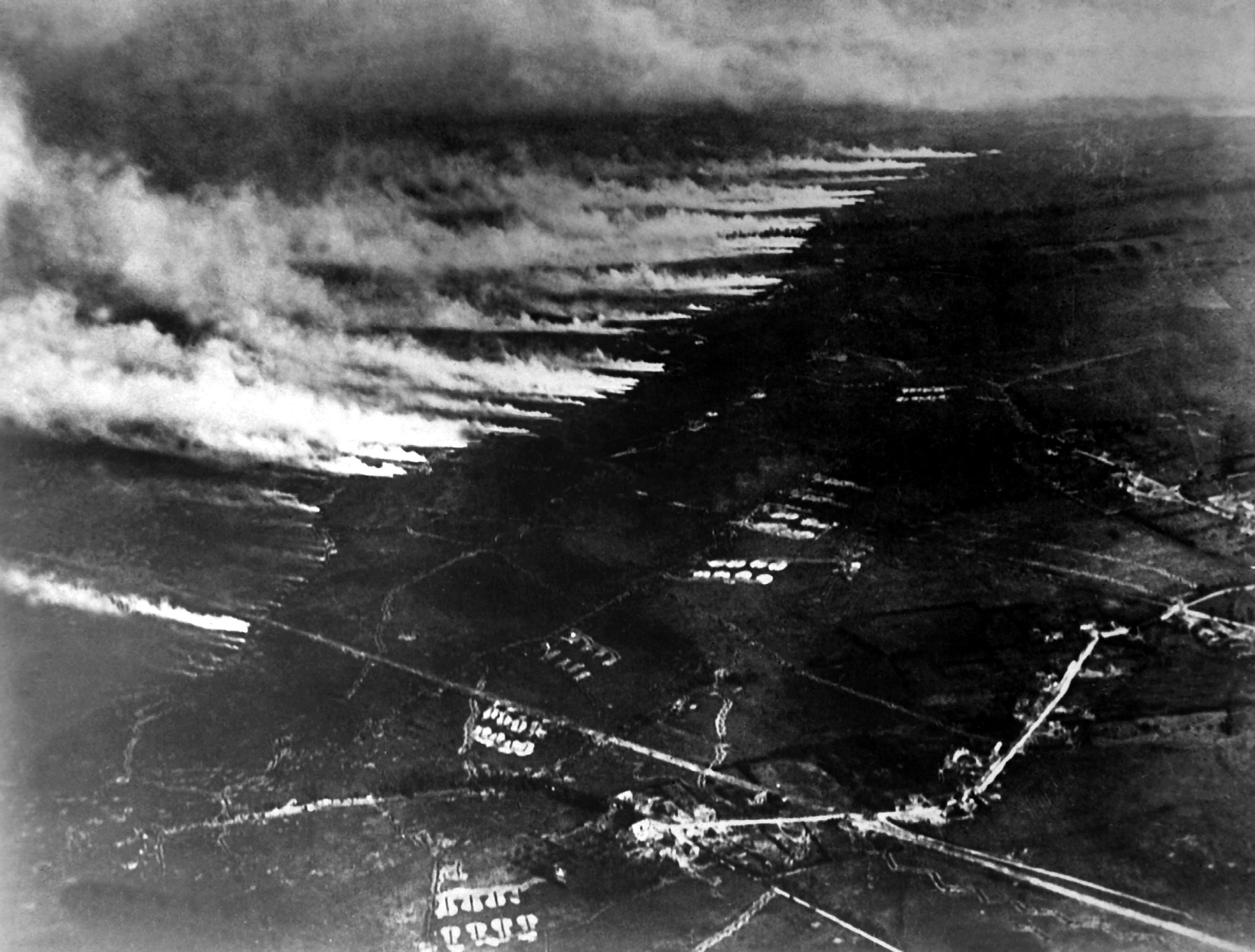|
Chloropicrin
Chloropicrin, also known as PS and nitrochloroform, is a chemical compound currently used as a broad-spectrum antimicrobial, fungicide, herbicide, insecticide, and nematicide. It was used as a poison gas in World War I. Its chemical structural formula is Cl3CNO2. Synthesis Chloropicrin was discovered in 1848 by Scottish chemist John Stenhouse. He prepared it by the reaction of sodium hypochlorite with picric acid: : HOC6H2(NO2)3 + 11 NaOCl → 3 Cl3CNO2 + 3 Na2CO3 + 3 NaOH + 2 NaCl Because of the precursor used, Stenhouse named the compound chloropicrin, although the two compounds are structurally dissimilar. Today, chloropicrin is manufactured by the reaction of nitromethane with sodium hypochlorite: : H3CNO2 + 3 NaOCl → Cl3CNO2 + 3 NaOH or by the reaction of chloroform with nitric acid: : CHCl3 + HNO3 → CCl3NO2 + H2O Properties Chloropicrin's chemical formula is CCl3NO2 and its molecular weight is 164.38 grams/mole. Pure chloropicrin is a colorless liquid, with a boiling po ... [...More Info...] [...Related Items...] OR: [Wikipedia] [Google] [Baidu] |
Pulmonary Agents
A pulmonary agent, or choking agent, is a chemical weapon agent designed to impede a victim's ability to breathe. They operate by causing a build-up of fluids in the lungs, which then leads to suffocation. Exposure to the eyes and skin tends to be corrosive, causing blurred vision and severe deep burns. Inhalation of these agents cause burning of the throat, coughing, vomiting, headache, pain in chest, tightness in chest, and respiratory and circulatory failure. Examples of pulmonary agents include: *Chlorine gas *Chloropicrin (PS) *Diphosgene (DP) *Phosgene (CG) *Disulfur decafluoride *Perfluoroisobutene *Acrolein *Diphenylcyanoarsine Phosgene is the most dangerous commonly used pulmonary agent (although disulfur decafluoride and perfluoroisobutene are both even more dangerous, with respectively 4 and 10 times the lethality of phosgene, neither is widely used). It is a colorless gas under ordinary conditions. It has a vapor density 3.4 times greater than that of air, allowing ... [...More Info...] [...Related Items...] OR: [Wikipedia] [Google] [Baidu] |
Poison Gas In World War I
The use of toxic chemicals as weapons dates back thousands of years, but the first large scale use of chemical weapons was during World War I. They were primarily used to demoralize, injure, and kill entrenched defenders, against whom the indiscriminate and generally very slow-moving or static nature of gas clouds would be most effective. The types of weapons employed ranged from disabling chemicals, such as tear gas, to lethal agents like phosgene, chlorine, and mustard gas. This chemical warfare was a major component of the first global war and first total war of the 20th century. The killing capacity of gas was limited, with about 90,000 fatalities from a total of 1.3 million casualties caused by gas attacks. Gas was unlike most other weapons of the period because it was possible to develop countermeasures, such as gas masks. In the later stages of the war, as the use of gas increased, its overall effectiveness diminished. The widespread use of these agents of chemical warf ... [...More Info...] [...Related Items...] OR: [Wikipedia] [Google] [Baidu] |
Tetrachlorodinitroethane
Tetrachlorodinitroethane is a chlorinated nitroalkane produced by nitration of tetrachloroethylene with dinitrogen tetroxide or fuming nitric acid. It's a powerful lachrymatory agent and pulmonary agent that is six times more toxic than chloropicrin. Tetrachlorodinitroethane may be used as a fumigant. See also *Chloropicrin * Trifluoronitrosomethane *Trichloronitrosomethane Trichloronitrosomethane is a chlorinated nitrosoalkane. It is a deep blue liquid with powerful lachrymatory effects. Synthesis Trichloronitrosomethane can be produced with following methods: * Oxidation of trichloromethylsulfinic acid with nitri ... References Nitro compounds Organochlorides Lachrymatory agents Pulmonary agents Fumigants {{Organohalide-stub ... [...More Info...] [...Related Items...] OR: [Wikipedia] [Google] [Baidu] |
